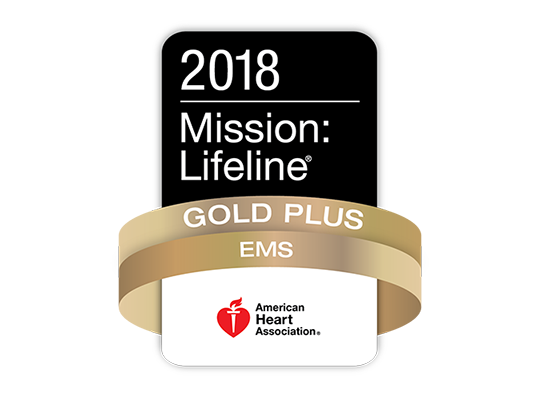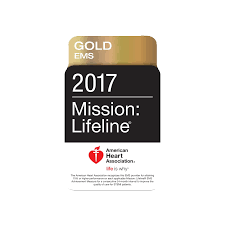Creating, implementing and maintaining a Quality Management Program in Emergency Services (ES), including examples, current models and best practices of quality assurance and improvement, process improvement and data collection and analysis are important.
Performance measurement is a responsibility of all ES Systems. For clinical care there must be performance measurement as well as external validation of that measurement in accordance with rules set forth by the North Carolina Office of EMS (NCOEMS). The Quality Management Committee facilitates both requirements.
Forsyth County EMS QMC Meetings
| Tuesday January 22 2:30 - 4:00 PM |
Wednesday April 24 10:30 AM - 12:00 PM |
Wednesday August 28 10:30 AM - 12:00 PM |
Wednesday October 23 10:30 AM - 12:00 PM |
|---|---|---|---|
| Q4 2018 data (Oct - Dec) |
Q1 2019 data (Jan-Mar) |
Q2 2019 data (Apr-Jun) |
Q3 2019 data (Jul-Sep) |
| Agenda | Agenda | Agenda | Agenda |
About AHA Award and Pictures
MISSION: LIFELINE® is the American Heart Association's national initiative to advance the SYSTEM OF CARE for patients with acute, high-risk time sensitive life and/or quality of life threatening disease states, such as ST Elevated Myocardial Infarction (STEMI Heart Attack), Non-ST Elevated Myocardial Infarction (NSTEMI Heart Attack), Stroke and Out of Hospital Cardiac Arrest. The overarching goals of Mission: Lifeline are to bring stakeholders together in a collaborative manner and to reduce mortality and morbidity for these patients while improving overall quality of care and patient outcomes.
Mission: Lifeline EMS recognition is a program designed to showcase Emergency Medical Service organizations across the nation for excellent STEMI care. Prehospital personnel are the first providers of care to patients suffering from cardiac emergencies. The role of EMS in the system-of-care for these patients is crucial and often sets the course for the patient's outcome. The Mission: Lifeline EMS recognition program was launched in 2014 and continues to celebrate the achievement of the pre-hospital providers and their collaboration with each other and destination hospitals specific to STEMI patient care.
2019 Mission: Lifeline EMS Recognition Measures
There are four required Mission: Lifeline EMS recognition measures and one optional plus measure. The table below is a quick glimpse at these measures and the impact each have on the care and outcomes of the patient.
| 2019 Mission: Lifeline EMS Recognition Measure | Measure Impact to Care and Outcomes |
|---|---|
| Measure 1: 12 Lead ECG Acquisition | Early 12 Lead acquisition → Early recognition of STEMI → Early Notification to the ED → Early Activation to the Cath Lab → Timely Reperfusion |
| Measure 2: EMS FMC 12 Lead ECG acquisition ≤10 Minutes | Early 12 Lead acquisition → Early recognition of STEMI → Early Notification to the ED → Early Activation to the Cath Lab → Timely Reperfusion |
| Measure 3: EMS FMC to PCI ≤90 minutes and/or EMS FMC to PCI ≤120 minutes when transport time ≥45 minutes and Door to Balloon ≤30 minutes | Coordination of care between EMS and the STEMI Referring hospitals |
| Measure 4: EMS Arrival at STEMI Referring Hospital to Lytic administration ≤30 minutes or EMS FMC to PCI of the transfer patient ≤120 minutes | Coordination of care between EMS and the STEMI Referring hospitals |
| Plus Measure (Optional): Percentage of 12 Lead ECG's performed within 10 minutes of EMS FMC on patients with chest pain/ACS symptoms who are ≥35 years of age | Early 12 Lead acquisition → Early recognition of STEMI → Early Notification to the ED → Early Activation to the Cath Lab → Timely Reperfusion |







